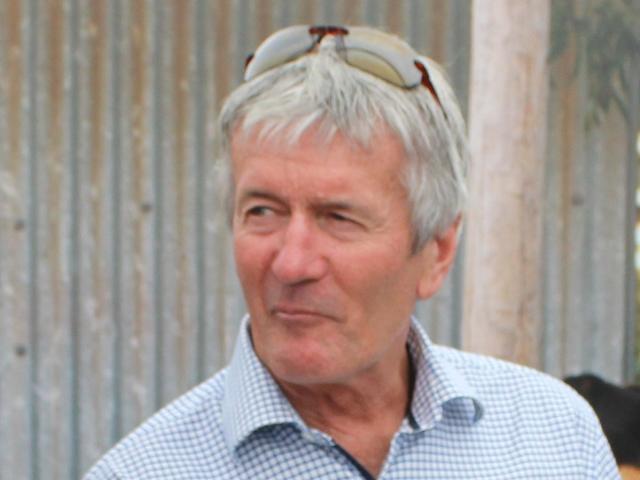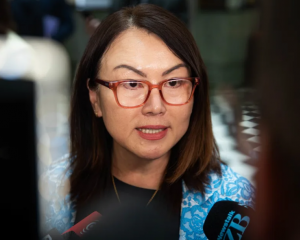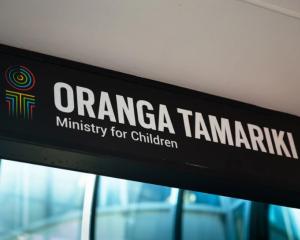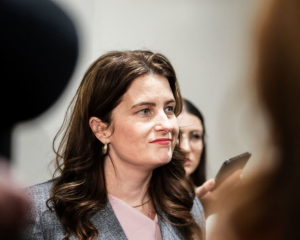More than a third of cars on New Zealand roads will be electric or hybrid - and high-emitting vehicle banned - under a significant plan unveiled by the Government.
- Read ODT feature: Our last best chance
The $4.5 billion in funding announced today will help reduce global warming and avoid the catastrophic impacts of climate change.
It also includes $500 million to help low-income families shift to electric and hybrid vehicles - part of the Government's commitment to ensuring climate action does not further entrench inequality.
The Government's Emissions Reduction Plan (ERP), unveiled today, represents one of the most important and ambitious steps Aotearoa has made to do its bit toward tackling a climate crisis fast approaching the symbolic 1.5 degrees Celsius threshold and reaching the target net-zero greenhouse gas emissions by 2050.
It seeks to do so first by meeting three emissions budgets initially out to 2035, which have Parliamentary support.
Deputy Prime Minister Grant Robertson said it was the "most significant day in our country's history on climate action".
The primary focus in the plan is transport, which makes up 17 per cent of total emissions and had increased 76 per cent since 1990.

Climate Change Minister James Shaw said the plan would "lay the path toward a net zero future".
"Where more people can purchase electric vehicles (EVs), our towns and cities have world-leading public and active transport infrastructure, our highest emitters have switched to clean and reliable energy, our farmers are growing food in ways that help the climate, and more of our homes are warmer and more affordable to heat."
Asked if the Government had moved fast enough given the immediate threat of climate change, Shaw said it had taken "30 years to get to the start line".
He said we should always go "further and faster" but he was confident in the plan.
Shaw said the plan was based on principles including New Zealand playing its part in the global effort, Te Tiriti o Waitangi and equity, working with nature to address the biodiversity crisis, and all working together to build a more productive and sustainable economy.
The transport sector will get a $1.2 billion boost, including $569 million for the Clean Car Upgrade, which will help lower and middle-income households scrap high-emitting vehicles in exchange for electric and hybrid alternatives.
The trial will initially support up to 2500 vehicles.
Shaw said equity was a major focus of the plan and that climate action should not "further entrench inequality."
The long-awaited plan also adopts previously-touted goals of 30 per cent of the light vehicle fleet being zero emissions by 2035, and total driving being cut by a fifth.
These are designed to encourage uptake as at March EVs only accounted for fewer than 40,000 of more than 3.3 million light vehicles on our roads – despite recently-announced measures like new import standards and "feebates" that target polluting vehicles.
By 2035 the Government has also required the entire public transport bus fleet to be zero emissions, with only zero emissions buses entering from 2025.
The plan does not contain any commitment to continue the half-price public transport fares scheme, though Robertson said extending this was "still under review" ahead of the full Budget being released on Thursday.
The plan does indicate support for a congestion charge in Auckland with a decision expected later this year.
Prime Minister Jacinda Ardern said it was a "landmark day" in the transition towards a low-emissions future.
"We've all seen the recent reports on sea level rise and its impact right here in New Zealand. We cannot leave the issue of climate change until it's too late to fix," said Ardern, speaking from isolation after catching Covid-19.
Robertson today revealed the Climate Emergency Response Fund, established with $4.5 billion from Emissions Trading Scheme revenue, and which will fund many of the actions.
The fund will initially have $2.9 billion over four years.
Māori have long been recognised as among the most vulnerable groups to climate-change impacts due to their "significant reliance on the environment as a cultural, social and economic resource".
The Māori economy relied heavily on primary industries, and many communities were near the coast. Already many urupā (burial grounds) and marae were being flooded or washed into the sea.
Shaw said empowering Māori to lead responses to climate change and upholding Te Tiriti o Waitangi principles were one of the key focuses in the plan. This included developing a specific Māori Climate Strategy and Action Plan.
Agriculture sector

In the agriculture sector, as expected, the Government did not adopt the Climate Commission's bold proposal to chop dairy, beef and sheep numbers by 15 per cent this decade.
That's largely because the Government is negotiating separately with the industry through the He Waka Eke Noa programme – and big decisions around emissions cuts aren't likely until later in the year.
The plan itself expects just a 0.3 to 3.7MT of C02 equivalent reduction by 2025, however by then the sector will come under the Emissions Trading Scheme.
Agriculture Minister Damien O'Connor said while he accepted those initial targets were small he was confident the sector would meet its targets to cut biogenic methane emissions by 10 percent on 2017 levels by 2030 and by between 24 to 47 percent lower by 2050.
But despite agriculture still being outside the Emissions Trading Scheme the sector will receive $710m over four years in funds from it to help lower emissions in the sector and develop "green fuels".
About 50 per cent of emissions came from agriculture, including 23.5 per cent from dairy cattle.
Between 1990 and 2020, emissions from the sector increased by 17 per cent mainly due to an 80 per cent increase in the dairy herd and increase in use of synthetic nitrogen by about 693 per cent.
Asked how that was fair the sector received funding without contributing to it, Robertson said they could have taken a "principled stand" but these funds would work towards lowering those emissions.
Shaw said emissions pricing under the Emissions Trading Scheme would continue to be a key part of reducing emissions, but relying on it alone was considered to have the highest cost, and thus would work with other measures in the plan.
Energy sector
Other targets enshrined today include reducing waste emissions from landfills, with most houses to have food waste collection by 2030. Freight emissions would also be reduced by 35 per cent by 2035.
Shaw said the energy sector was another primary focus, which made up 27 per cent of emissions.
Actions there included new coal boilers to be banned and old ones phased out by 2037.
Just over $650 million had been allocated to decarbonising industry over four years until 2026, with another $330 million over three years after that.
Funding would also go towards developing an energy strategy and using alternative fuels, such as hydrogen and those derived by biomass.
The final carbon budgets confirmed this month, taking us out to 2035, are roughly similar to what the Climate Commission recommended nearly a year ago, along with what the Government floated in its own draft version of the emissions plan.
Over the first period, out to 2025, the Government wants to keep emissions to around 290 megatonnes of CO2e (MtCO2e) - or slightly under the emissions we've projected.
While the allowance lifts slightly over the second period – that's 305 MtCO2e between 2026 and 2030 – it's still calculated to be about 20 per cent less than what the country pumped into the atmosphere in the five years to 2021.
The third 240 MtCO2e budget, for 2031 to 2035, represents a 35 per cent cut.












